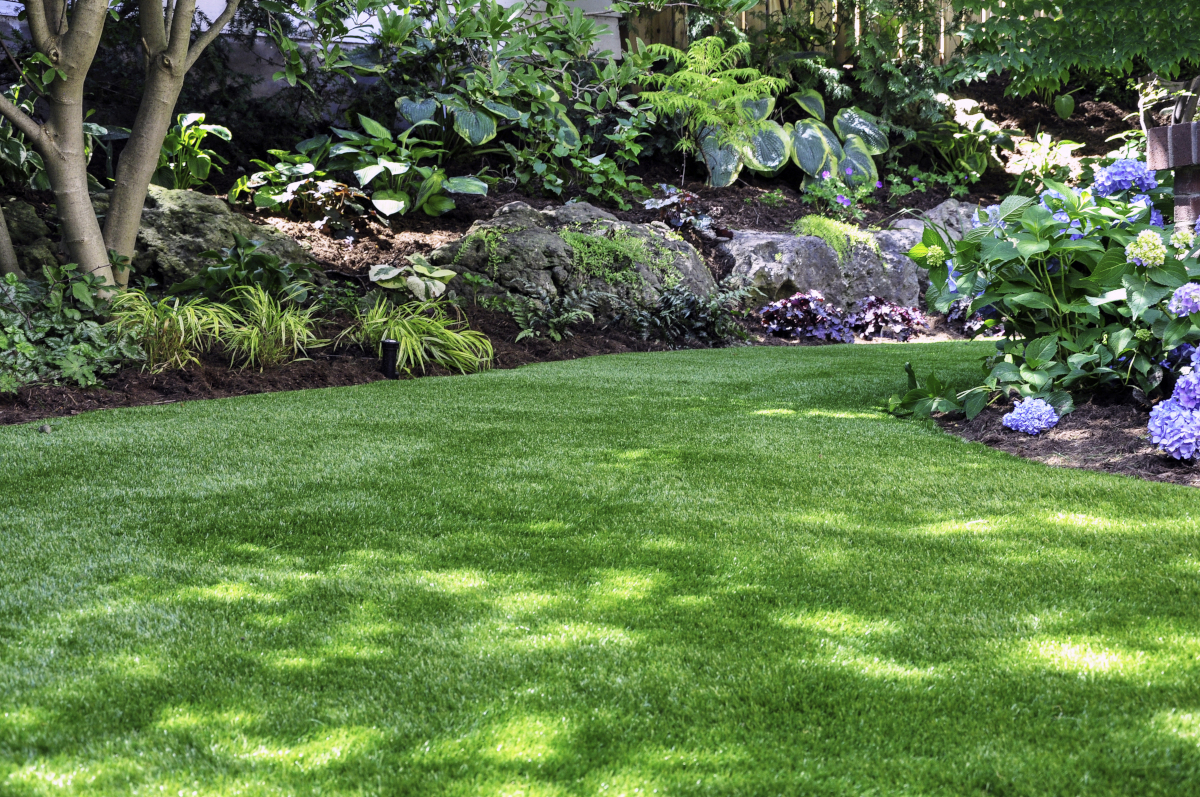Last Updated on November 17, 2023 by ReTurf
When planning your outdoor space, whether it’s a lush backyard, a community playground, or a professional sports field, the ground cover you choose is crucial. It shapes not just the look, but also the usability and maintenance needs of the area. Here, the modern durability and ease of synthetic turf meet the classic charm and natural feel of organic sod. Synthetic turf offers a consistently green, low-maintenance option, ideal for varied climates and heavy-use scenarios. Organic sod, on the other hand, brings the traditional beauty of natural grass, along with its environmental benefits. Understanding the strengths and limitations of each can help you make an informed decision that suits your specific outdoor needs, ensuring your space is not only beautiful but also functional and sustainable.
Overview of Synthetic Turf
Synthetic turf, a versatile and resilient alternative to natural grass, has become increasingly popular for a variety of outdoor applications. Initially designed for sports fields, its use has expanded to residential lawns, public parks, and commercial landscapes. This artificial grass is made from synthetic fibers, designed to mimic the look and feel of natural grass. The evolution of synthetic turf materials over the years has led to significant improvements in durability, safety, and aesthetic appeal.
Originally introduced in the 1960s, synthetic turf has undergone tremendous advancements. Early versions were primarily used in sports arenas and were known for their hard texture. Today’s synthetic turf, however, is softer, more natural-looking, and versatile. It’s engineered to withstand heavy use and diverse weather conditions, making it an ideal choice for areas where natural grass might struggle to thrive.
At ReTurf, we specialize in providing high-quality used artificial turf, offering an eco-friendly, cost-effective solution. Our products, ranging from sports-grade to landscaping options, demonstrate the practicality and aesthetic versatility of synthetic turf, making it a suitable choice for a wide range of projects.
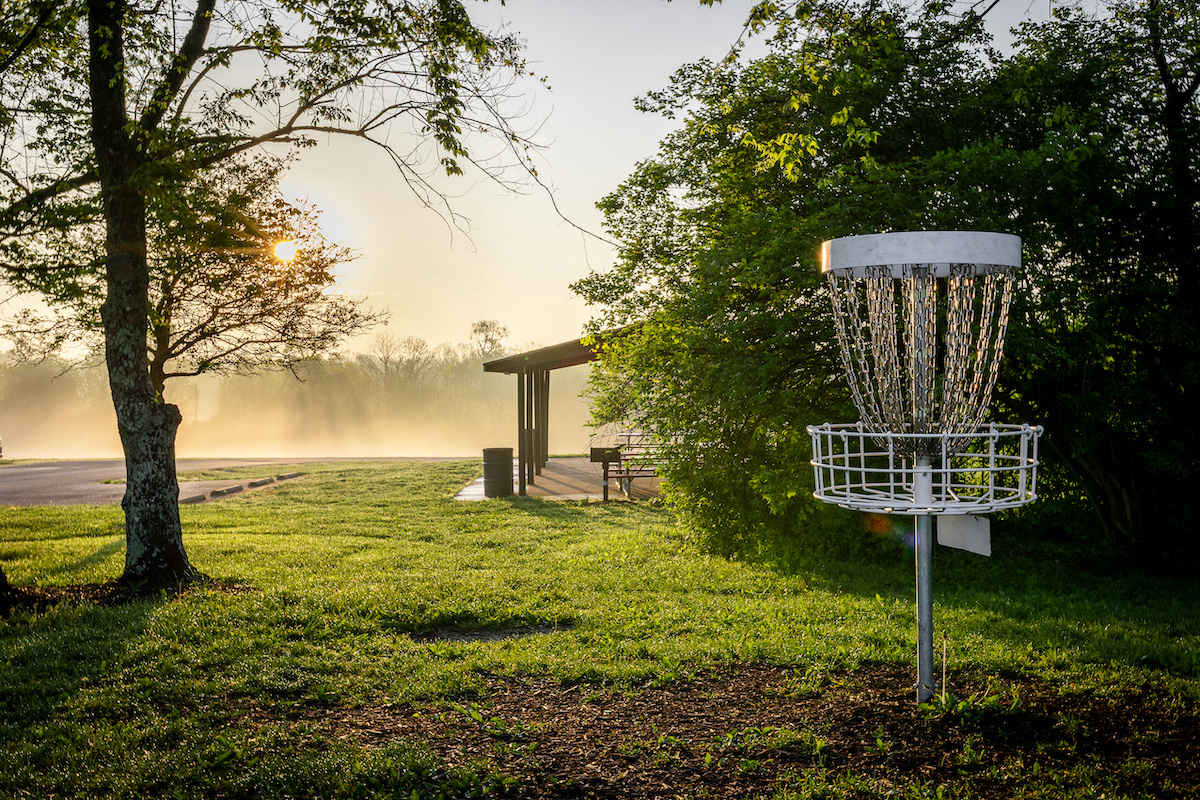
Benefits of Synthetic Turf
Synthetic turf offers a multitude of advantages, making it a preferred choice for various outdoor spaces. Key among these benefits is its exceptional durability. Designed to withstand heavy foot traffic and all weather conditions, synthetic turf maintains its pristine condition for years, making it ideal for sports fields, playgrounds, and residential lawns. This longevity is a significant advantage, especially in high-use areas where natural grass would quickly wear down.
Another major benefit is the low maintenance required. Unlike organic sod, synthetic turf doesn’t need watering, mowing, or fertilizing. This not only saves time and effort but also reduces water consumption and the need for chemical treatments, offering a sustainable and cost-effective solution for landscaping.
Additionally, synthetic turf provides year-round aesthetic appeal. It remains uniformly green and lush throughout the seasons, irrespective of weather conditions. This consistent beauty enhances the look of outdoor areas, providing a pleasant and inviting environment.
ReTurf, with its focus on quality used artificial turf, brings an additional layer of benefits. By opting for reused turf, customers enjoy all the advantages of synthetic grass while making an eco-friendly choice. ReTurf’s products, which include high-grade turf recovered from sports fields and stadiums, combine the practicality of synthetic turf with a commitment to sustainability. This reused turf not only reduces waste and landfill usage but also offers a cost-effective solution without compromising on quality or appearance.
Challenges and Considerations with Synthetic Turf
While synthetic turf presents numerous benefits, it’s important to acknowledge its challenges. One notable concern is heat retention. Synthetic materials can absorb and radiate heat, leading to higher surface temperatures compared to natural grass. This can be a consideration in areas with high summer temperatures, potentially affecting comfort and usability.
Environmental concerns are also associated with synthetic turf. The production and disposal of artificial materials have ecological impacts. However, opting for reused or recycled turf, as offered by ReTurf, can significantly mitigate this concern. By reusing turf from sports fields and stadiums, ReTurf provides an eco-friendlier option, reducing the demand for new materials and minimizing waste.
The initial cost of synthetic turf can be higher than organic sod. However, this is often offset by the long-term savings in maintenance, such as watering, mowing, and fertilizing. ReTurf’s approach to providing quality used turf at a lower cost further helps in making synthetic turf a more accessible option.
To address heat retention, installing shade structures or choosing lighter-colored turf can help reduce surface heat. Additionally, advancements in turf technology are continually improving its environmental footprint, making it a more sustainable choice over time. By selecting ReTurf’s reused synthetic turf, customers can enjoy the benefits while addressing these challenges effectively.
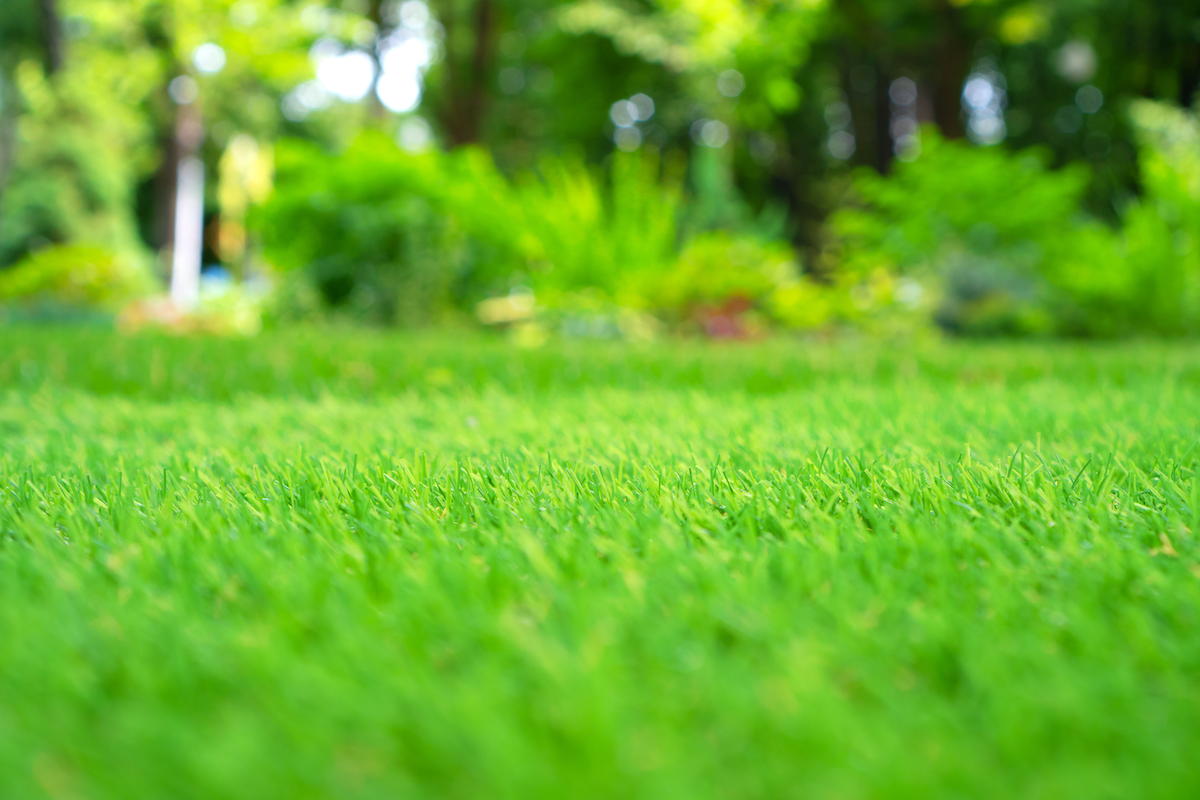
Overview of Organic Sod
Organic sod refers to rolls or sections of grass that have been grown and harvested naturally, without the use of synthetic pesticides or fertilizers. It is essentially a slice of earth with mature grass and a part of its root system or soil layer intact, ready for transplantation. Commonly used for quickly establishing a lawn, organic sod is popular in residential landscaping, public parks, and commercial properties seeking a natural aesthetic.
The use of organic sod in landscaping dates back centuries. Traditionally, it was used to repair damaged or eroded areas, providing immediate ground cover and stabilization. Over time, its role expanded to quickly creating lush, green lawns. Unlike seeding, which requires time for germination and growth, laying sod offers an instant lawn, a key factor in its widespread popularity.
In landscaping, organic sod is valued for its ability to provide an immediate natural grass area. It’s particularly beneficial in erosion-prone areas or where a quick establishment of green space is desired. The appeal of organic sod lies in its natural composition, offering a living ecosystem that supports local biodiversity. However, it requires suitable soil preparation, regular watering, and maintenance to establish and thrive, considerations that are less of a concern with synthetic alternatives like those provided by ReTurf.
Benefits of Organic Sod
Organic sod offers several advantages that make it an attractive option for landscaping and outdoor spaces. Firstly, its natural appearance is a significant benefit. Organic sod provides an instantly lush, green lawn that blends seamlessly into natural landscapes. This immediate transformation is particularly advantageous for new constructions or areas requiring rapid beautification.
Environmentally, organic sod plays a crucial role. It contributes to soil health by preventing erosion, improving soil structure, and promoting water retention. Unlike synthetic surfaces, sod absorbs carbon dioxide and releases oxygen, actively contributing to a healthier environment. Its ability to filter rainwater and reduce runoff is also significant, helping to maintain local water quality.
Organic sod also supports local ecosystems. It offers a habitat for microorganisms and small wildlife, enhancing biodiversity in garden and landscape settings. This living cover is more than just visually pleasing; it’s a functioning ecosystem that benefits the surrounding environment.
An example of these benefits can be seen in urban park developments. Parks that incorporate organic sod not only provide aesthetic and recreational value but also serve as urban green spaces that improve air quality and offer natural habitats. Similarly, residential properties using organic sod have seen improvements in outdoor comfort, property value, and environmental quality.
While ReTurf specializes in synthetic turf solutions, understanding the advantages of organic sod is crucial for making informed decisions about landscaping needs. Each option has its unique benefits, and the choice depends on individual project requirements and environmental considerations.
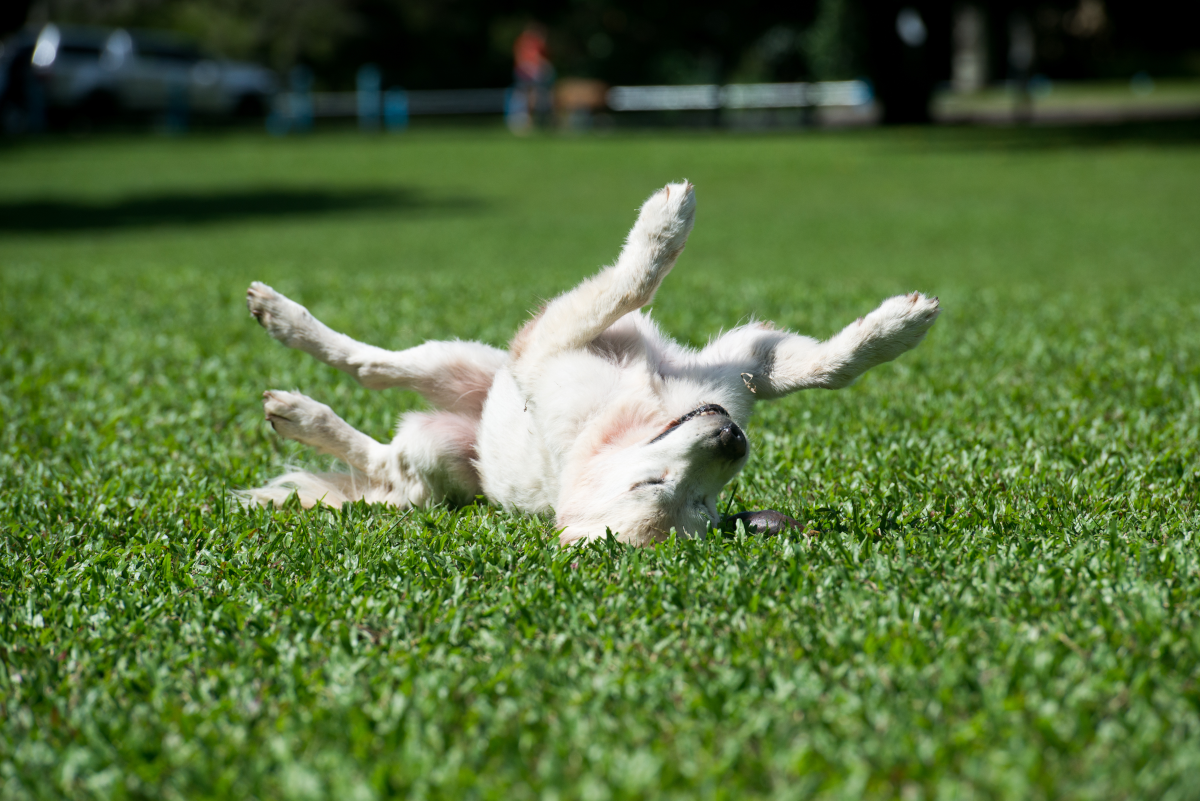
Challenges and Considerations with Organic Sod
Organic sod, while offering numerous benefits, also comes with its own set of challenges. One of the primary concerns is its higher maintenance requirements. Organic sod needs regular watering, especially in the initial stages post-installation, to ensure proper root establishment. It also requires ongoing care, including mowing, fertilizing, and weed control, to maintain its health and appearance.
Seasonal limitations are another factor to consider. Organic sod thrives best when laid during specific times of the year, typically in the spring or early fall. This is to ensure that the conditions are optimal for root development. Installing sod outside of these ideal periods can lead to poor establishment and increased maintenance efforts.
Additionally, organic sod is susceptible to pests and diseases. Grubs, beetles, and fungal infections can damage the grass, necessitating vigilant monitoring and potentially the use of pesticides or fungicides.
To overcome these challenges, proper planning and care are essential. Choosing the right time for installation, implementing a regular maintenance schedule, and selecting the appropriate sod type for the local climate and soil conditions can greatly improve the success rate. Integrated pest management strategies can also help in managing pest issues without relying heavily on chemicals. For those seeking a lower-maintenance alternative, synthetic options like those offered by ReTurf can be considered, providing the benefits of a green space without the extensive upkeep required by organic sod.
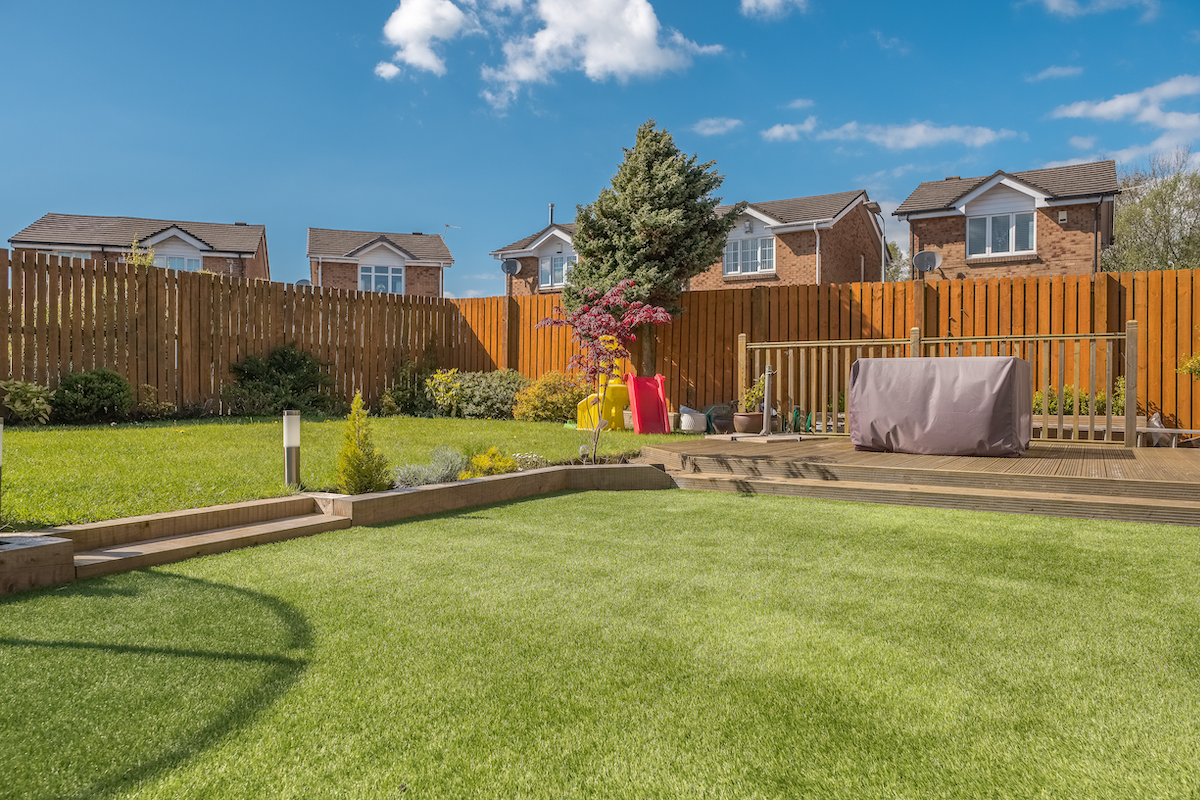
Comparative Analysis: Synthetic Turf vs. Organic Sod
When evaluating synthetic turf and organic sod for outdoor spaces, several key factors come into play: cost, maintenance, environmental impact, and suitability for various applications.
Cost: Initially, synthetic turf tends to have a higher upfront cost compared to organic sod. This includes the price of the material itself and installation. However, the long-term savings are significant due to reduced maintenance costs. Synthetic turf doesn’t require watering, mowing, or fertilizing, which can lead to substantial savings over time. In contrast, organic sod has a lower initial cost but incurs ongoing expenses for watering, mowing, fertilizing, and pest control.
Maintenance: Synthetic turf is low-maintenance; it needs occasional cleaning and brushing to keep it looking fresh but does not require the regular care that organic sod does. Organic sod, on the other hand, demands consistent maintenance – watering, mowing, fertilizing, and disease management are all necessary to keep it healthy and attractive.
Environmental Impact: The environmental considerations of both options are complex. Synthetic turf eliminates the need for water and chemical treatments, which is beneficial. However, it is made from plastic and has a carbon footprint associated with its production. Reused synthetic turf, like that offered by ReTurf, mitigates this by recycling existing materials. Organic sod contributes to a healthy ecosystem by absorbing carbon dioxide, supporting biodiversity, and aiding in soil erosion prevention, but it requires significant water usage and often needs chemical treatments.
Suitability for Different Applications: Synthetic turf is highly suitable for areas with heavy foot traffic, like sports fields and playgrounds, and in regions with water scarcity. Its durability and ability to withstand diverse weather conditions make it ideal for such applications. Organic sod is best suited for areas where natural appearance and ecosystem benefits are priorities, such as residential lawns and public parks. It’s also preferable in settings where the environmental benefits of a living, breathing grass cover are desired.
The choice between synthetic turf and organic sod depends on individual needs and priorities. While synthetic turf offers durability, low maintenance, and long-term cost savings, organic sod provides natural beauty, environmental benefits, and a traditional lawn experience. Both have their place in landscaping, and the decision should be based on the specific requirements of the project at hand.
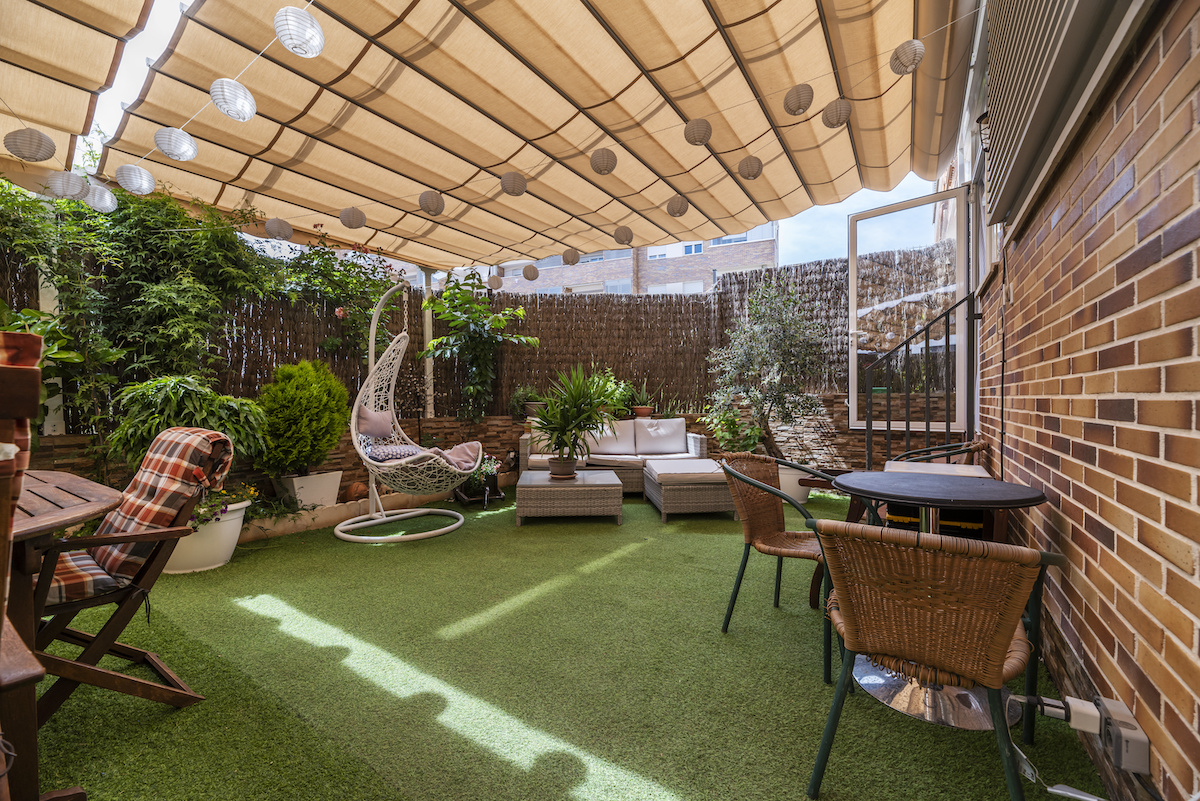
Choosing the Right Option for Your Space
Selecting the appropriate ground cover for your outdoor space hinges on various factors. Climate is a primary consideration; for areas prone to drought or with water usage restrictions, synthetic turf is a practical choice due to its minimal water requirements. In contrast, organic sod is well-suited for temperate climates where natural grass can flourish with adequate rainfall and cooler temperatures.
Usage of the space also plays a crucial role. Synthetic turf withstands heavy usage and foot traffic, making it ideal for sports fields and playgrounds. Organic sod, offering a softer, natural feel, is better for less trafficked areas like residential lawns or serene park settings.
Personal preferences should not be overlooked. Some prefer the authentic look and feel of natural grass, while others value the low maintenance and consistency of synthetic turf. Aesthetic considerations and lifestyle compatibility are essential in this decision-making process.
Installation and Maintenance Tips
For synthetic turf, installation involves proper ground preparation, ensuring a level and stable base. Regular brushing and occasional rinsing keep it clean and upright. ReTurf, with its range of high-quality used artificial turf, also offers expertise in installation and maintenance, guiding DIY enthusiasts and professionals alike.
Organic sod requires soil preparation, including grading and fertilizing, before installation. Post-installation, it’s crucial to water it adequately to establish roots. Regular mowing, fertilizing, and pest control are part of its ongoing maintenance.
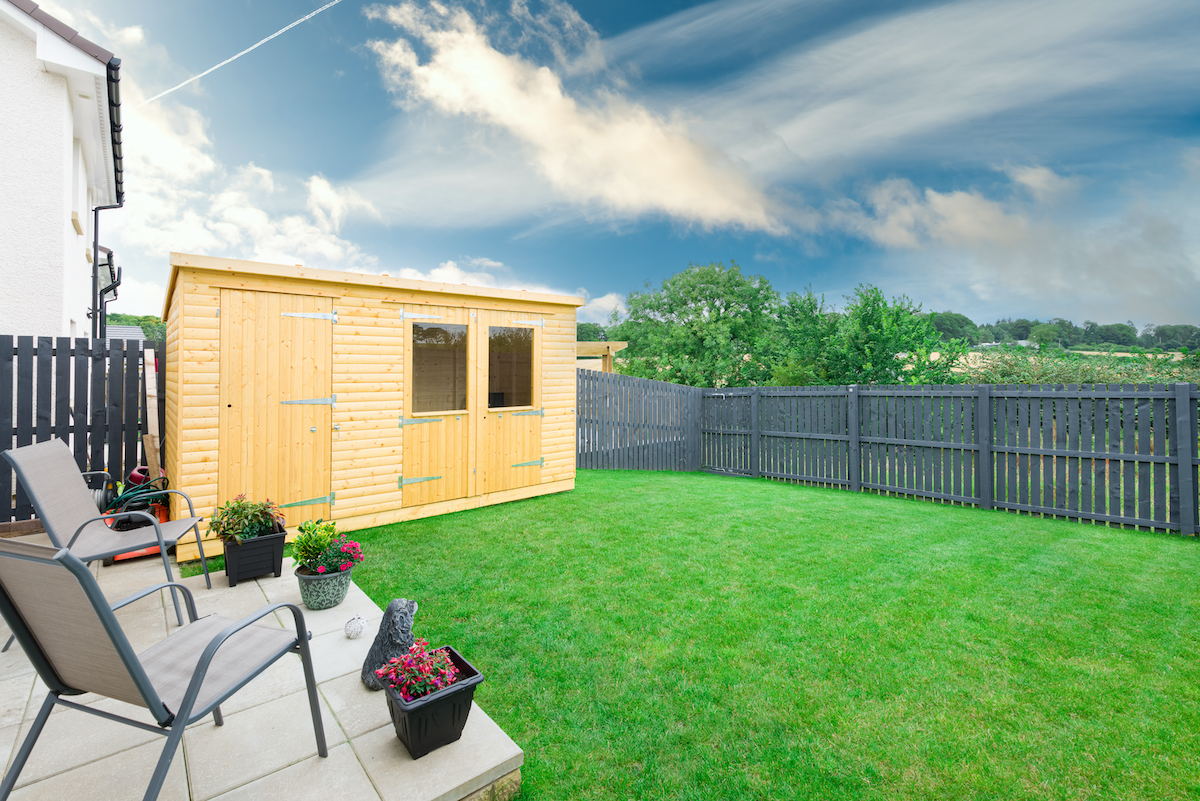
Future Trends and Innovations
The future of landscaping materials looks promising with technological advancements. In synthetic turf, eco-friendly materials and improved heat dissipation technologies are emerging. Innovations in organic sod include drought-resistant grass varieties and organic pest control solutions, making it more sustainable.
These advancements are poised to offer more environmentally friendly options in both categories, potentially shifting preferences based on new capabilities and ecological impact.
Conclusion
In the realm of landscaping, the choice between synthetic turf and organic sod is significant, each offering distinct benefits and considerations. The decision should be guided by factors such as climate, usage, and personal preferences. Whether it’s the enduring appeal and low maintenance of synthetic turf or the natural beauty and eco-friendliness of organic sod, understanding these options is key. Making the right choice ensures that your outdoor space is not only aesthetically pleasing but also functionally aligned with your lifestyle and environmental values. Ultimately, the goal is to create an outdoor area that fulfills both practical needs and personal aspirations. Check out ReTurf to learn more about New and Reused Turf options!

